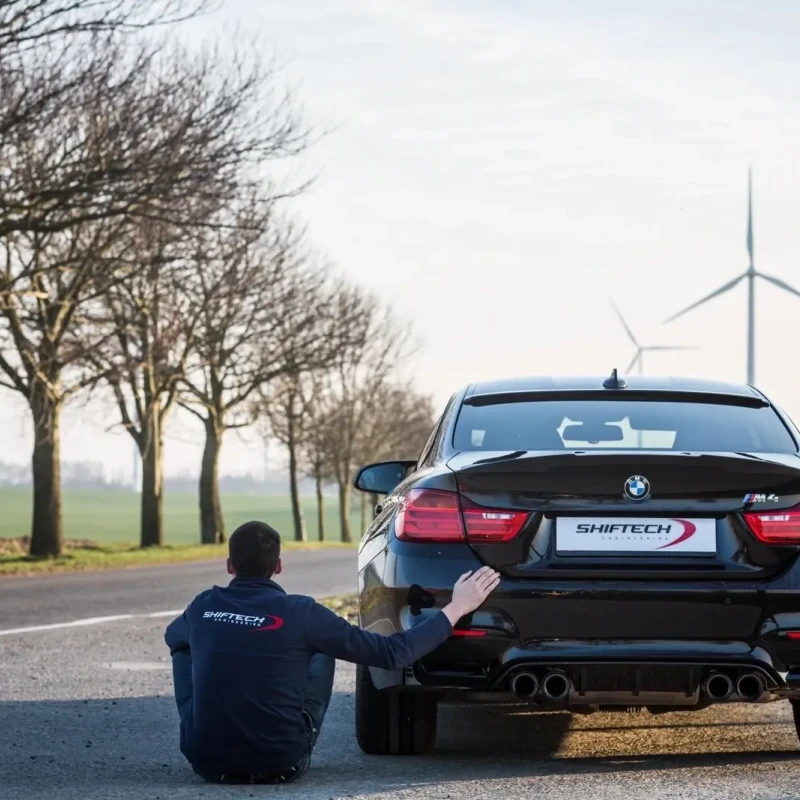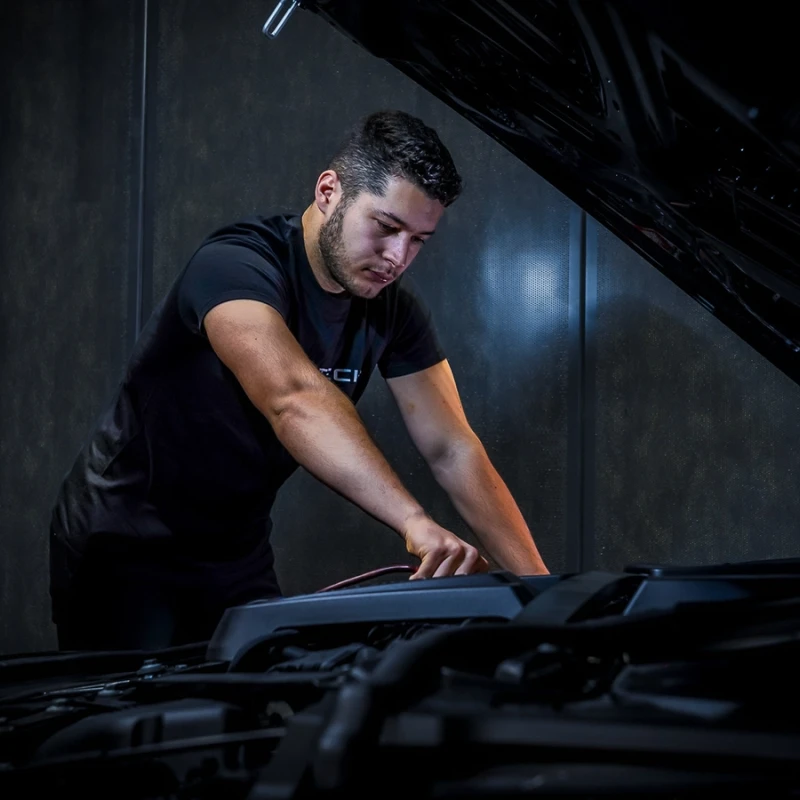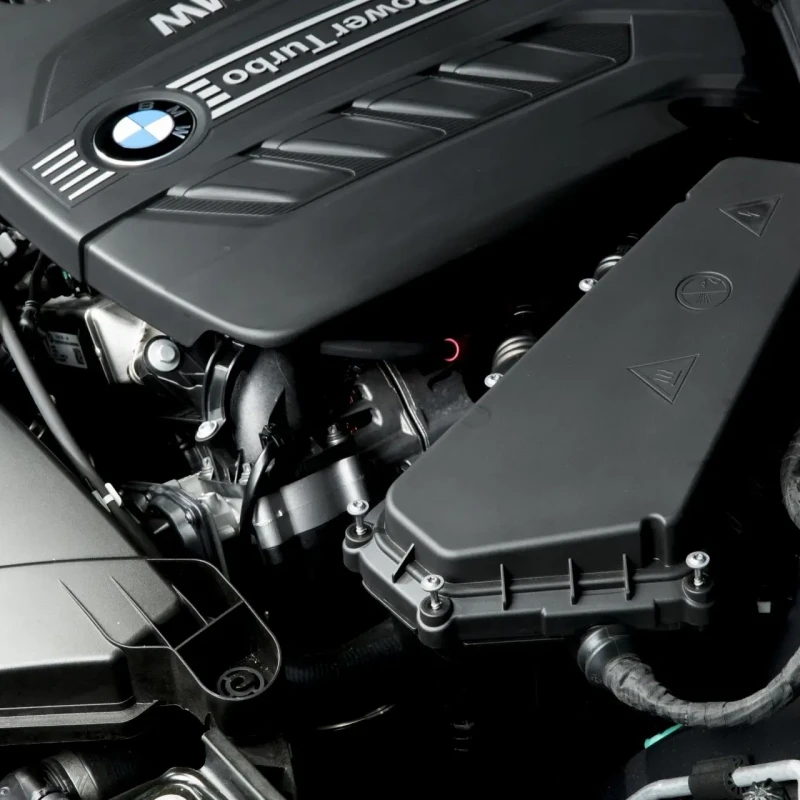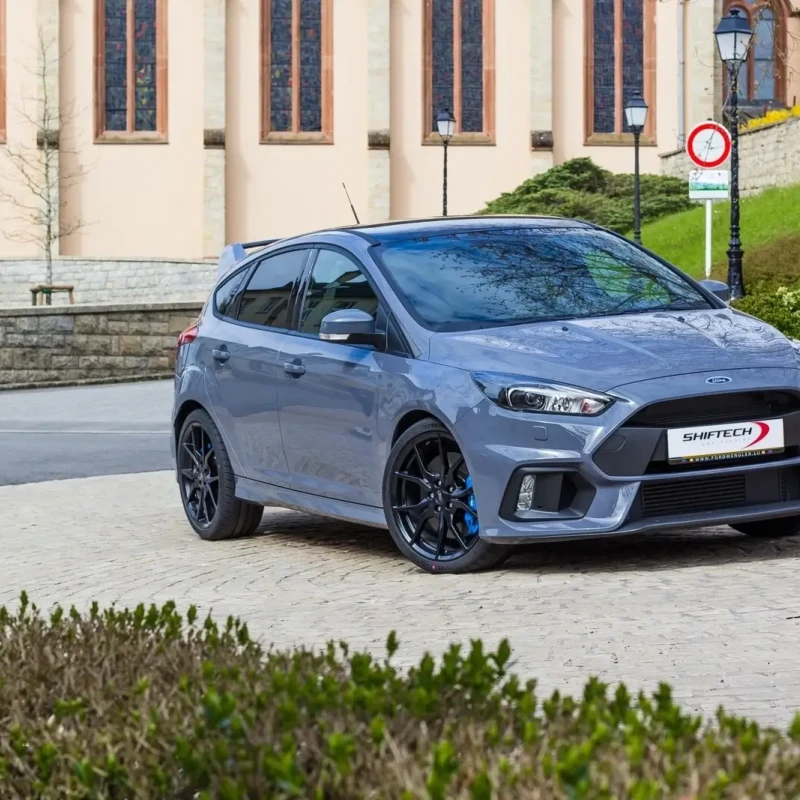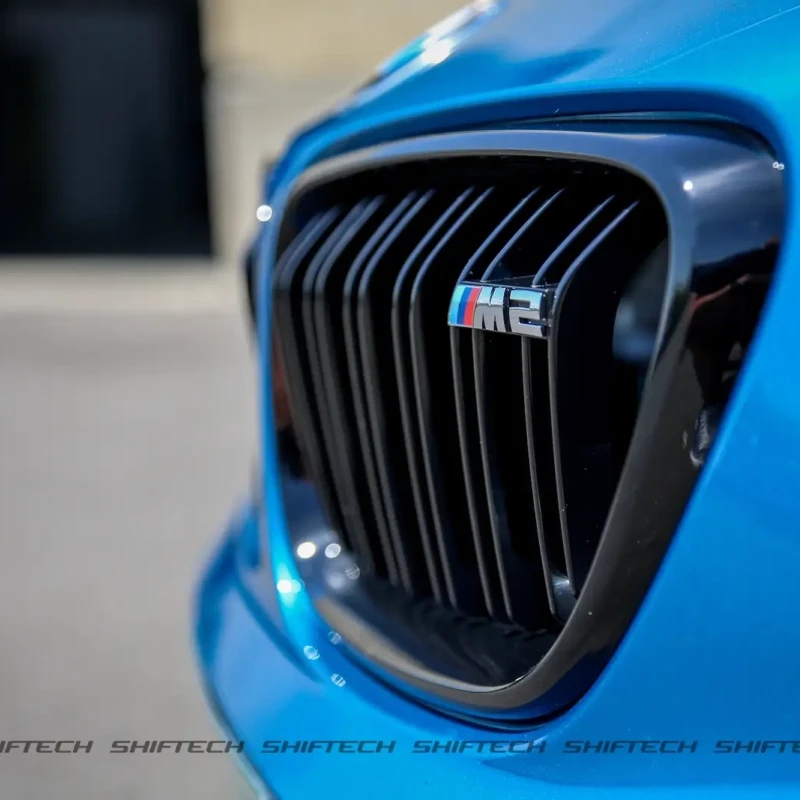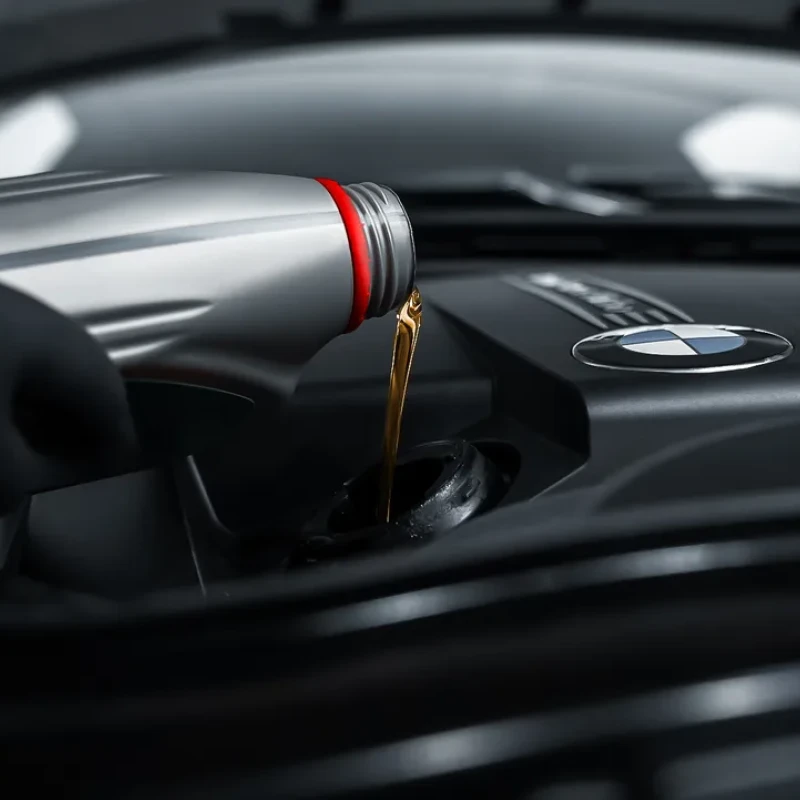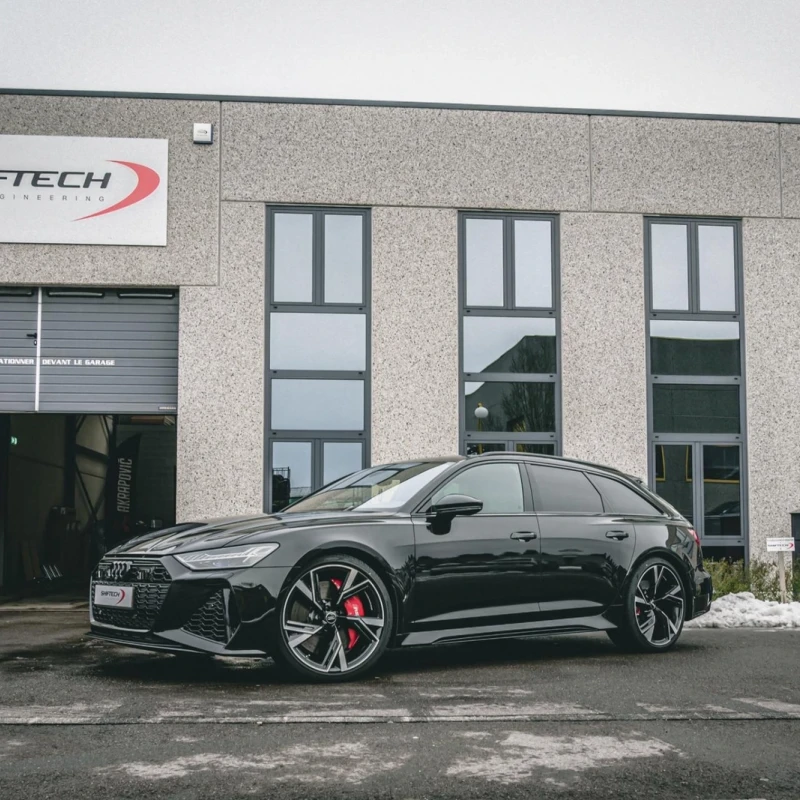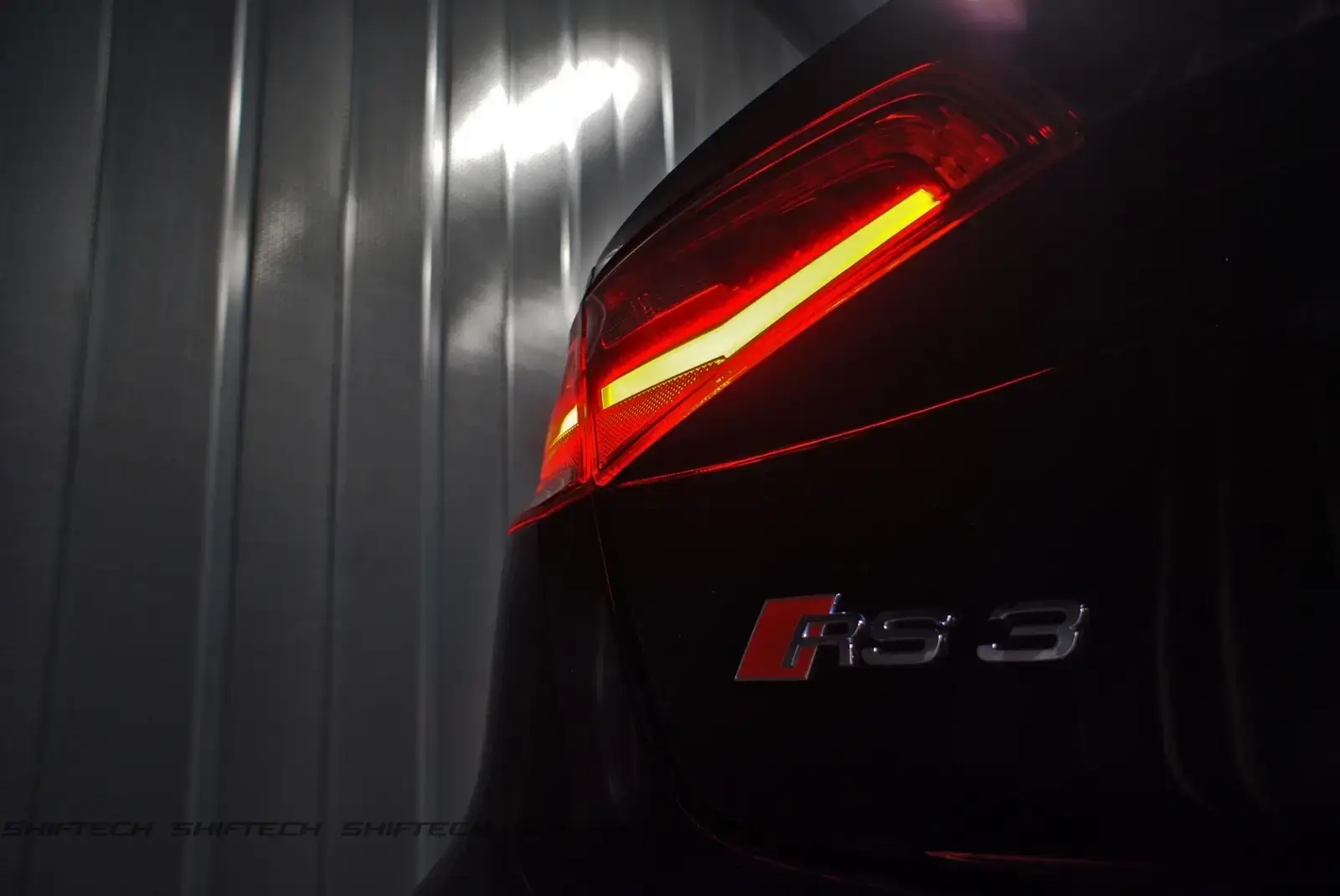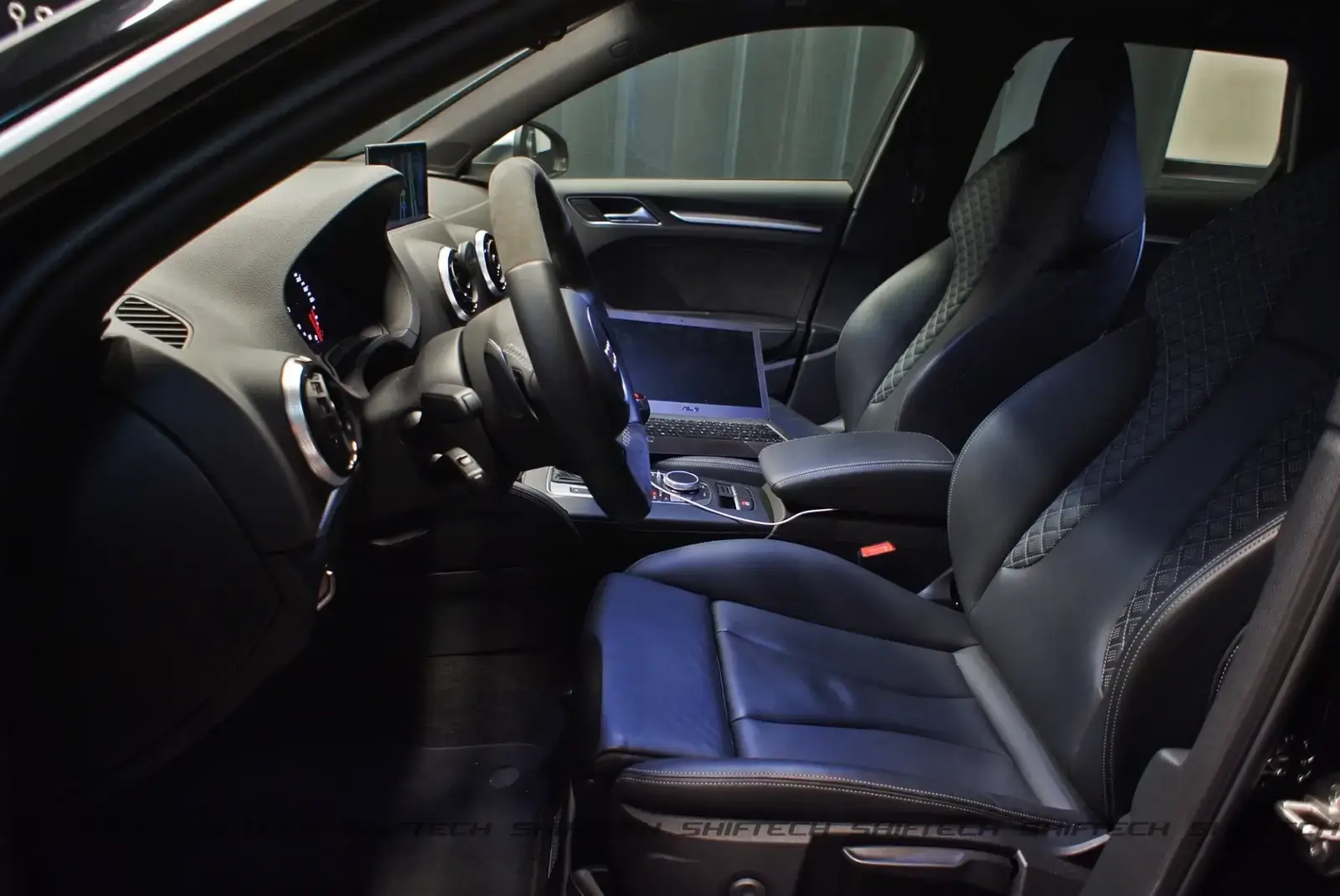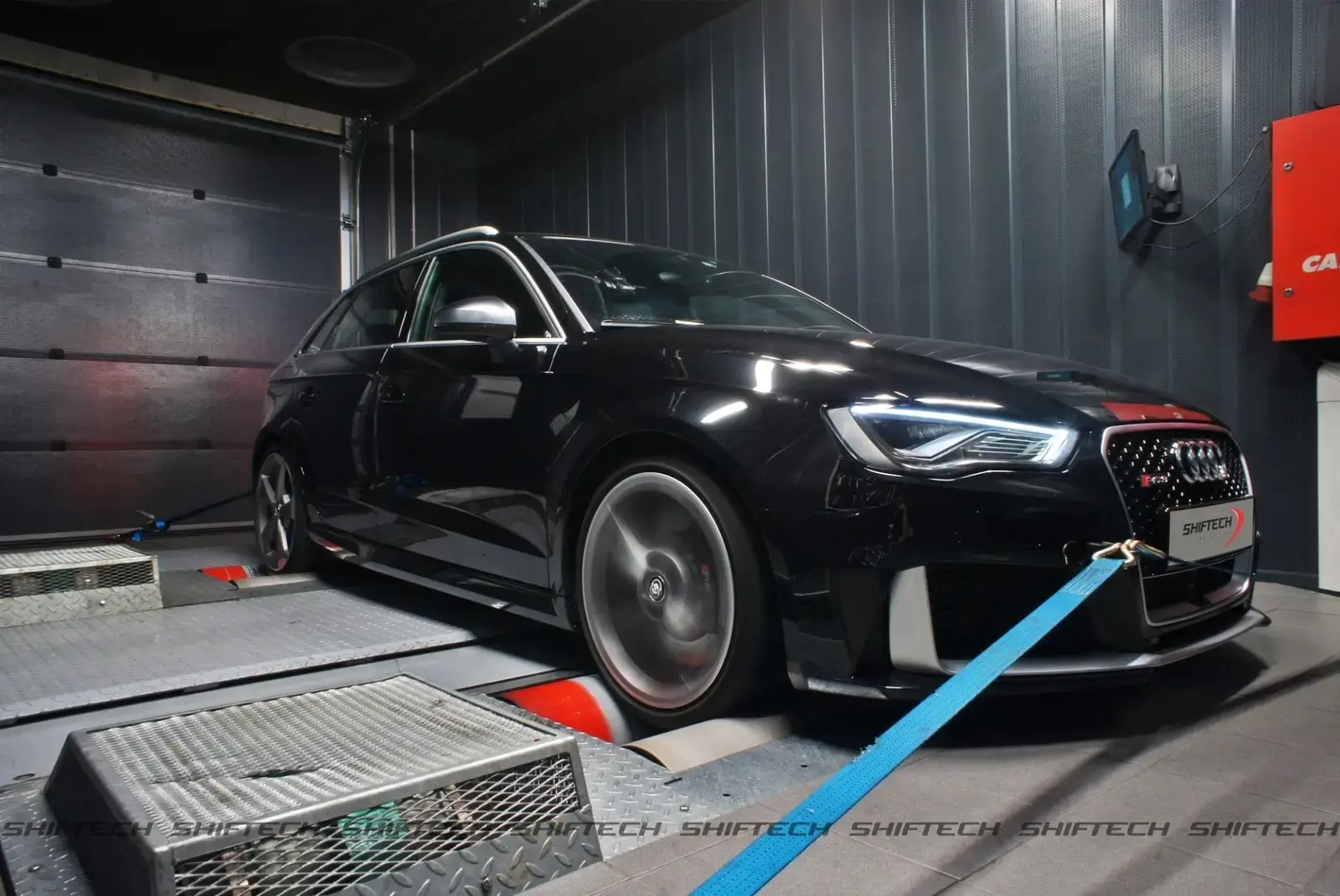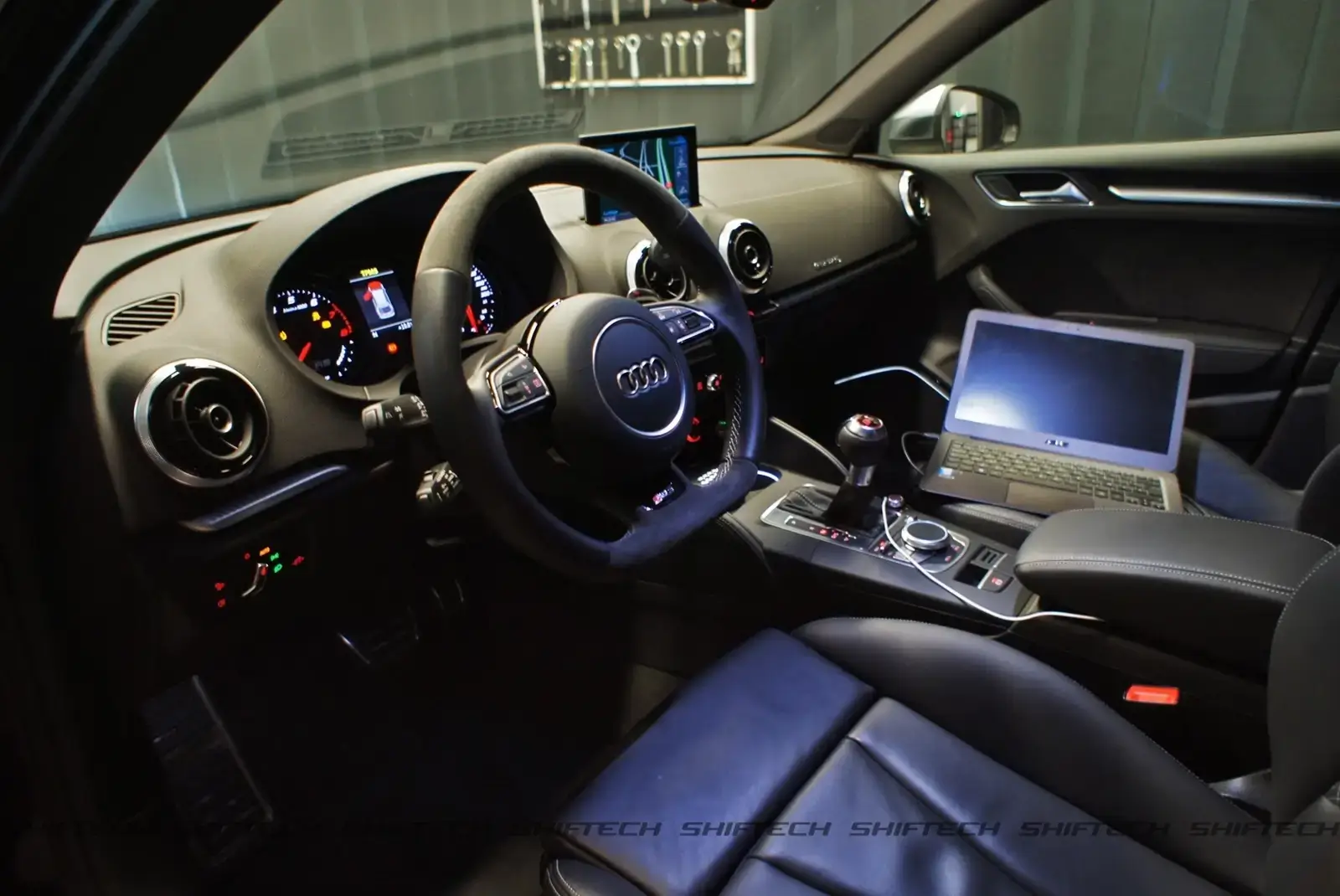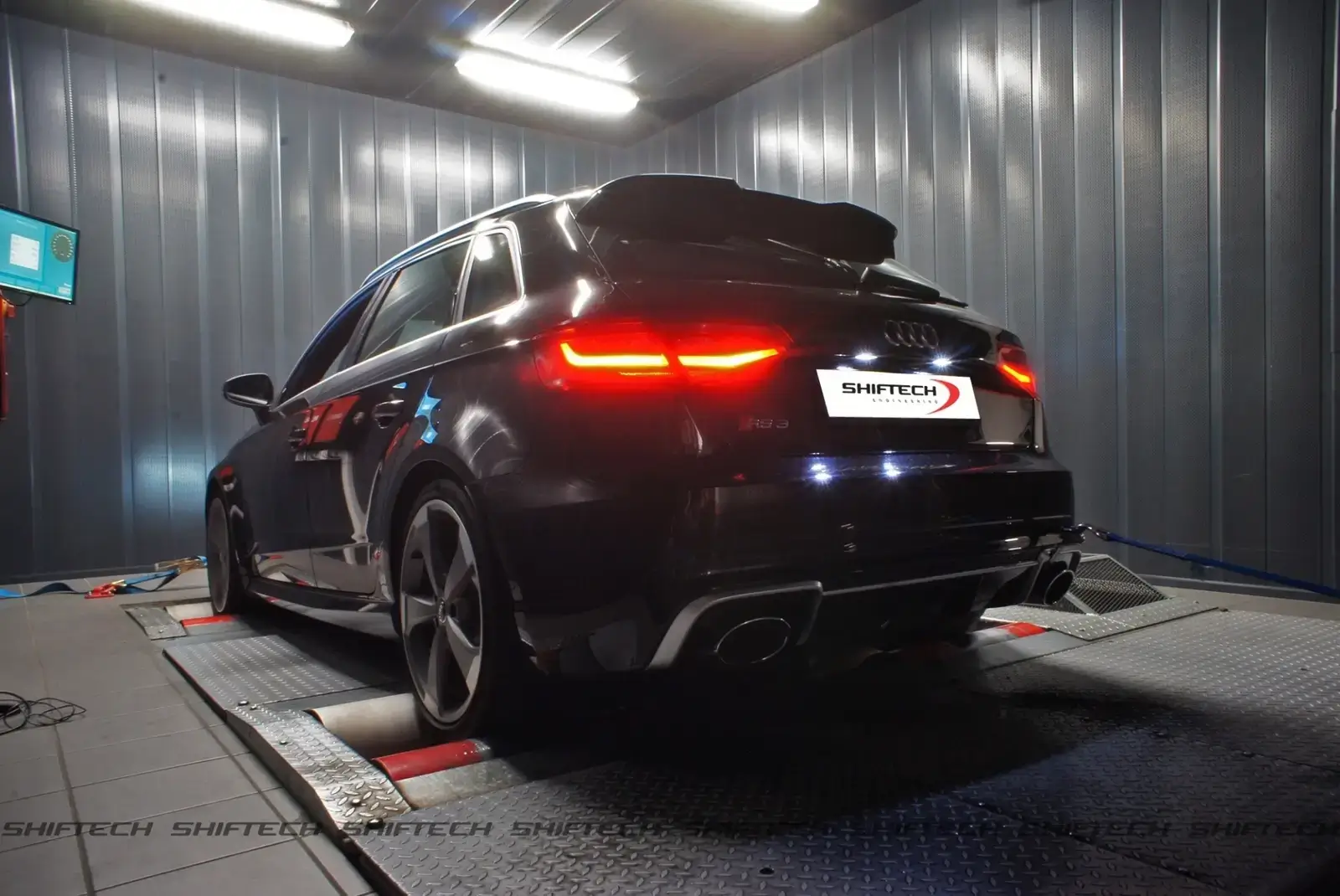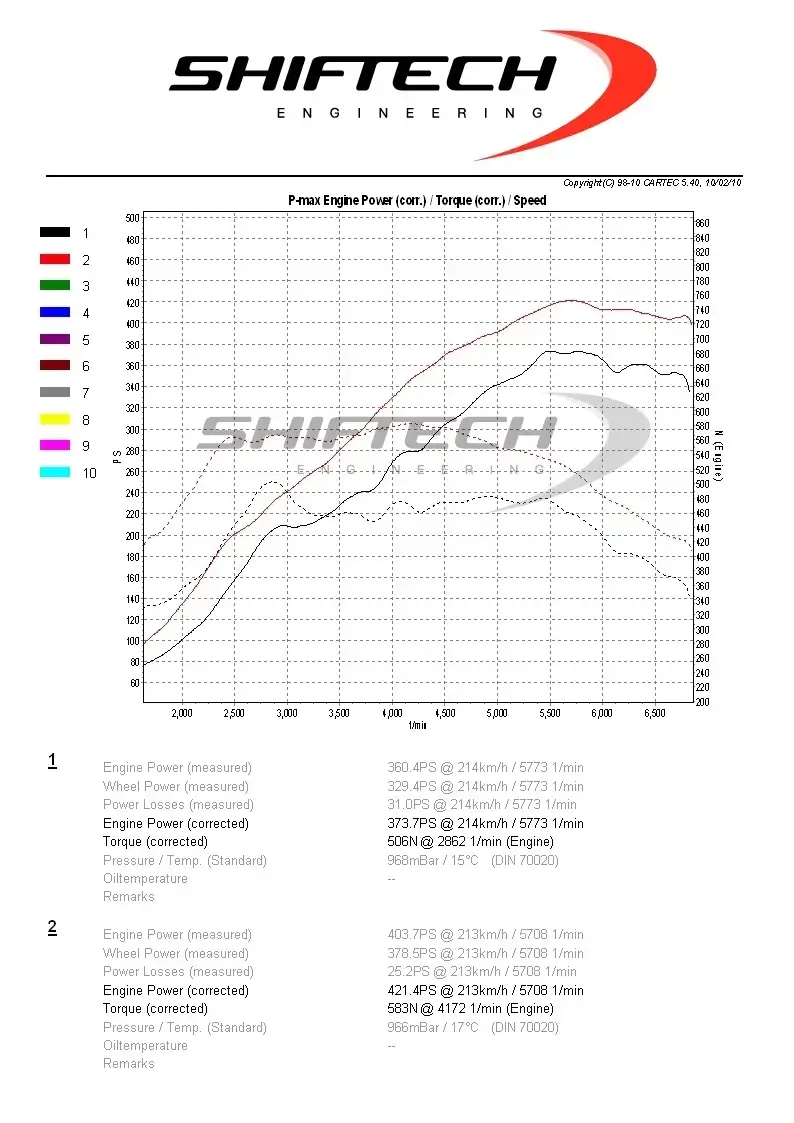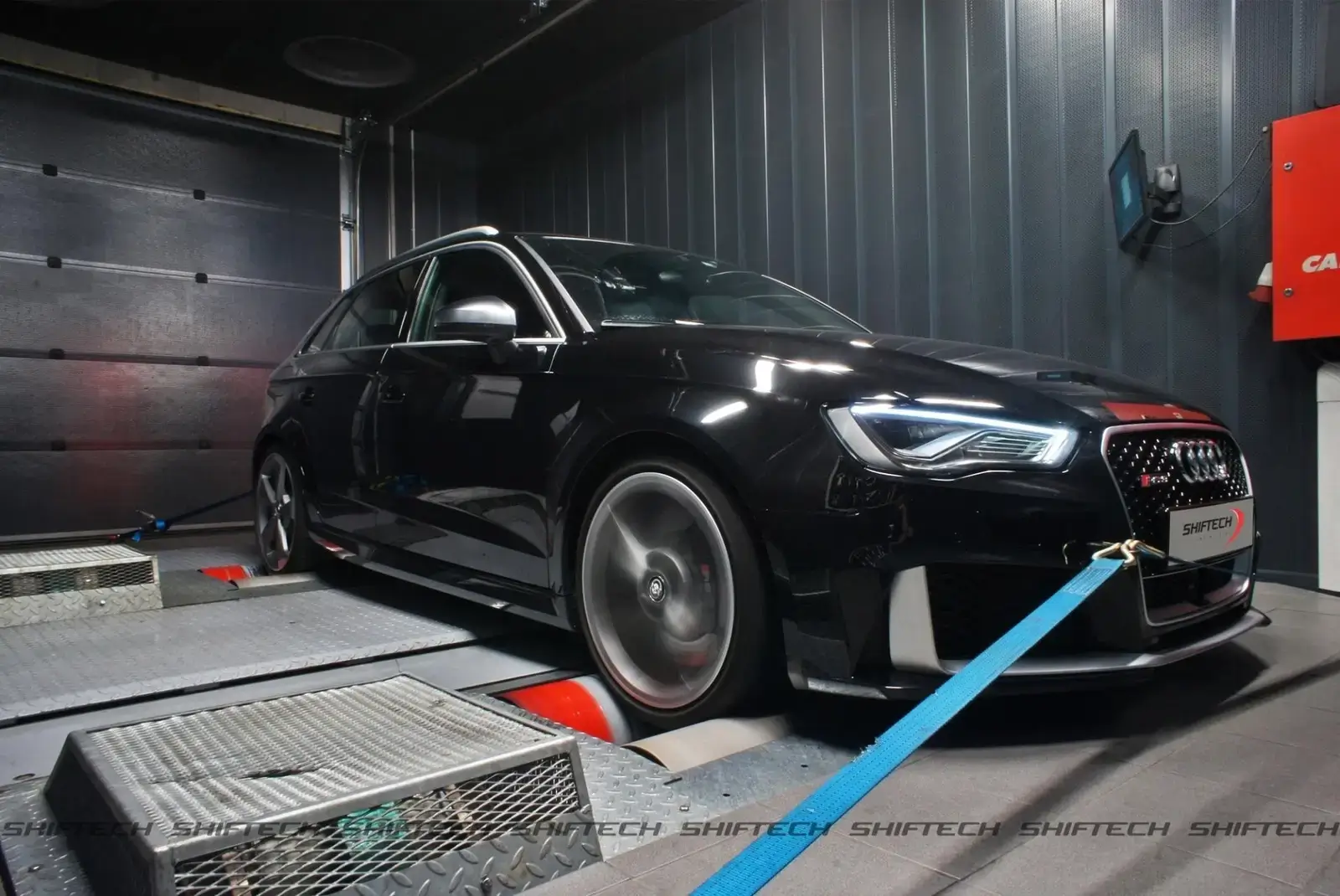
Audi RS3 8V
Initially presented at the Geneva International Motor Show, the new Audi RS3 8V has been officially on sale since early summer 2015.
This second edition retains the transverse 5-cylinder 2.5L TFSI engine and now develops 367hp and 465Nm, i.e. 27hp and 15Nm more than the first AUDI RS3 8P.
This performance is just a little better than that of its rivals, the BMW M135i xDrive and the Mercedes A45 AMG.
The new front bumper and oval tailpipes are reminiscent of the fabulous Audi RS6 4.0 TFSI. However, we regret the lack of visual difference with the S3, particularly in terms of the wings, which remain unchanged.
As for the transmission, we were impressed by the new S-Tronic 7-speed dual-clutch automatic gearbox, which is particularly quick and intuitive. We were also seduced by the original sound in Dynamic mode, thanks to a system of flaps in the exhaust.
There's no denying it, the latest ultra-sporty version of Audi's compact model is undoubtedly very accomplished.
Our engineer's opinion
Generally speaking, the RS3's handling is more playful than that of its predecessor, thanks to a better distribution of weight and torque in the transmission. The Haldex (viscous coupling) can transmit up to 100% to the rear wheels. In practice, the transverse engine still doesn't help to position the vehicle correctly in corners, and the latency, albeit reduced, between front-wheel drive and 4x4 mode compromises the sporty feel.
On the other hand, launch control starts are as explosive as ever, leaving a non-xDrive-equipped BMW M135i literally on the spot. The engine has real soul and we can thank Audi for not having sacrificed the 5-cylinder for a hormonal 4-cylinder. Although the Mercedes A45 AMG engine offers an incredible power to displacement ratio, the sound of Audi's 5-cylinder engine is truly unique and is likely to be missed on the next generation RS3, so let's make the most of it!
As you can see, this RS3 is aimed at a mature audience looking for a vehicle that is both sober and efficient, with an engine that delivers a sound that makes you feel good every time you accelerate. You don't need to be a racing driver to drive an RS3; it's very forgiving and very safe, thanks to its front-wheel drive characteristics.
From a performance point of view, the RS3 is already performing very well, as you'd expect from the figures. in comparison: the Mercedes A45 AMG, despite having similar power, didn't give us that sensation of thrust that is clearly more pronounced in the RS3.
What are the benefits of chiptuning this little bombshell?
The extra torque erases the linear effect of torque being available early and remaining available over a very wide range. In this respect, we can only applaud the progress made by the new turbochargers, which enable the engine to be loaded earlier and finished later. But that's not all: the RS3 finally comes as standard with an efficient intercooler (unlike the RS3 8P) that enables it to maintain a lot of pressure at high revs. After chiptuning, this translates into a clear increase in power. The 410-420bhp range is therefore possible, without any mechanical intervention whatsoever.
Do you want more?
A number of equipment manufacturers are already on the warpath to offer a larger diameter exhaust system and a sports catalytic converter, which will undoubtedly deliver a further 10 to 15bhp in what we hope will be an even more pleasant sound.
Should you give in to the RS3?
If you own the previous RS3, or if you love the sound of a 5-cylinder engine, then this is the car for you! It's the latest 5-cylinder engine on the market. Given the large number of vehicles in this segment, the RS3 was not particularly eagerly awaited. BMW M135i models have been selling like hotcakes since 2012. The winning combination: discreet yet sporty styling, a fully flexible in-line 6-cylinder engine and a well-balanced chassis. What's more, customers have a choice of weapons: rear-wheel drive or xDrive (quattro equivalent). As for the Mercedes A45 AMG, it defends itself well but leaves us with a taste of too little in terms of communication. It definitely seems too aseptic in every respect, apart from the exhaust system where, as AMG is obliged to do, we appreciated a sound that was so well crafted for a 4-cylinder.
Final debate: Quattro or XDrive?
Before getting into the debate, you need to know that there are two types of Quattro.
The first type of Quattro is a low-cost Quattro fitted to the brand's entry-level models (A1, A3, TT, etc). It is in fact a Haldex system, a viscous coupling that activates, like a clutch, the rear wheels when the ESP detects a loss of grip. The current RS3 is equipped with the latest generation of this system. the advantage of this Haldex system is that it leaves the vehicle in traction when driving is not sporty, and therefore consumes less fuel.
The second type, called Torsen, is reserved for the longitudinal engines fitted to the A4, A5, A7 and other models.the Torsen system is considerably heavier than the Haldex system, but it is more efficient.
The main fault with the Haldex system is that the vehicle behaves more like a front-wheel drive than a true permanent 4x4.
In order to limit this phenomenon on the previous RS3, Audi went so far as to fit 235-wide tyres at the front and 225-wide tyres at the rear... this process was original enough to be mentioned.
The new RS3 is better engineered, better balanced and 55kg lighter.taken together, all these elements make it possible to forget the understeer characteristic of the previous RS3.
But what is xDrive? xDrive, to put it very simply, is the opposite. The vehicle is a 4x4 with a continuously variable power distribution that always favours rear-wheel drive. Above 120 km/h, the vehicle automatically switches to rear-wheel drive. If the ESP detects a loss of grip, the torque is sent directly to the front. The result is a much more playful driving style, with the car tending to oversteer on corner entry, before naturally regaining grip at the front. If we compare, at least here, a Haldex and an xDrive, the xDrive system is really better from a sporting point of view. We'll leave aside the comparison between the Torsen and the xDrive for the moment, otherwise this article could be far too long.
Learn more
View articles
Similar
